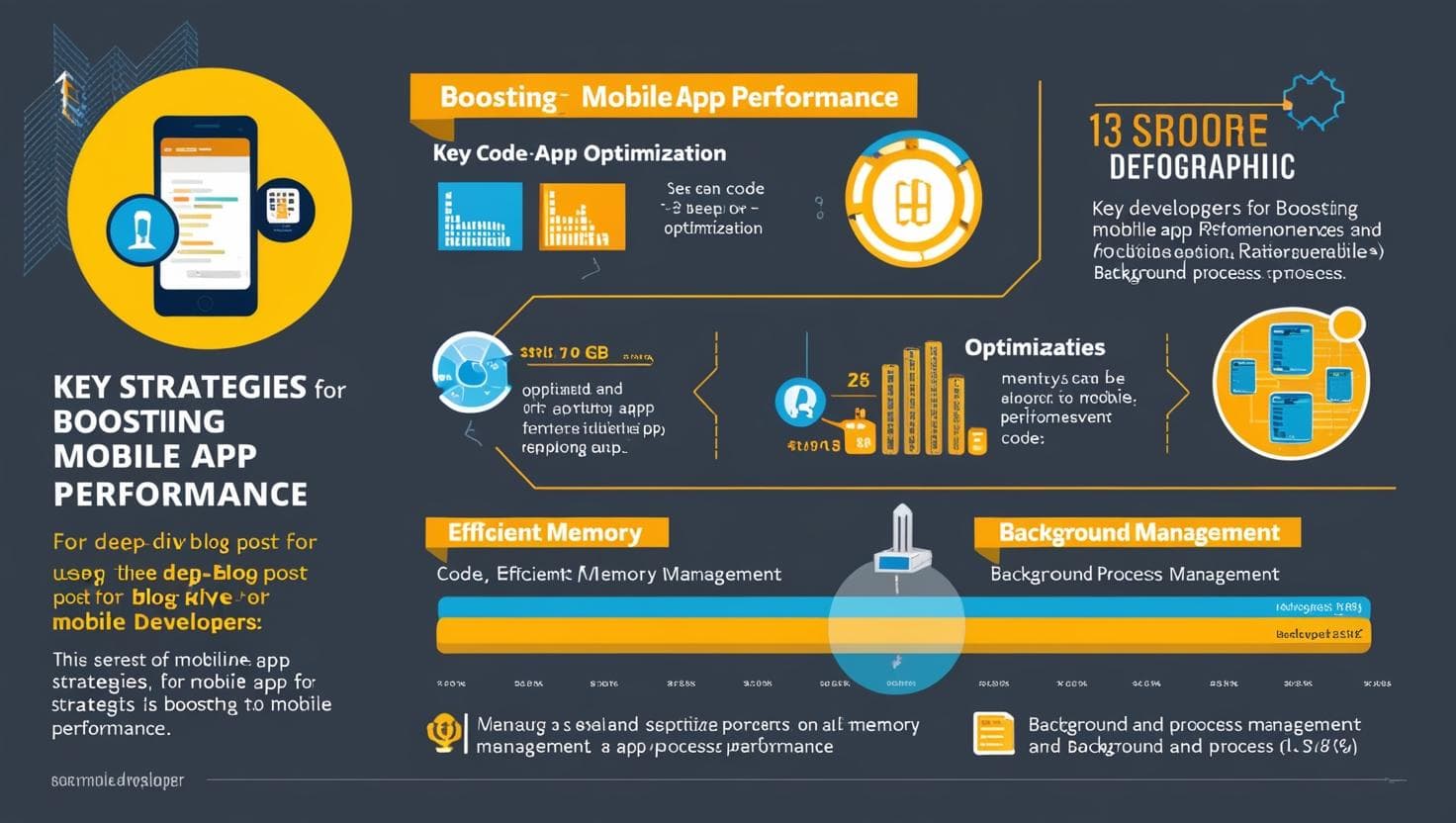App Performance: The Ultimate Guide for Mobile Developers
This deep-dive blog post explores key strategies to enhance your mobile apps performance...
Varritech
December 16, 2024

# Supercharging Your Application: A Guide to Mobile App Performance
Introduction: Understanding the Context
In the competitive realm of mobile app development, consistent high performance is a critical determinant of user satisfaction. With research indicating that about 53% of mobile users abandon apps that take longer than three seconds to load, it becomes paramount that your application functions efficiently and responsively. This guide articulates practical approaches mobile developers can employ to optimize their app performance.
Proficient Coding: Manifesting High Gear Performance
High-performing applications bear the imprint of efficient coding practices - be it controlling memory allocation, using the lazy loading technique to your advantage, or refining complex computational processes.
Illustrating with an example, Java developers can swap 'String' with 'StringBuilder' for recurrent string concatenation operations, warranting better performance:
[Java]
StringBuilder strBuilder = new StringBuilder();
strBuilder.append("somestring");
Contrast this with the less efficient method:
[Java]
String str = "somestring" + "someotherstring";
For developers on the iOS platform, employing 'Swift' Arrays in place of 'NSArray' can result in significantly improved performance under suitable conditions.
Background Task Execution
To attain an agile and interactive user interface essential to modern apps, integrate thread management to evenly distribute tasks, thus facilitating a fluid and uninterrupted user experience.
Exploring both Android and iOS examples:
For Android:
[Java]
new Thread(new Runnable() {
public void run() {
// background operations here
}
}).start();
For iOS, the Grand Central Dispatch (GCD) helps manage asynchronous operations:
[Swift]
DispatchQueue.global(qos: .background).async {
// background operations here
}
Image Enhancement: Optimizing for Visual Excellence
Images often constitute substantive portions of an app's visual elements. By improving image quality via optimization and effective format selection, you can significantly diminish app loading time and amplify overall performance. The strategic utilization of vectors, where appropriate, can also be beneficial.
For illustration, Android developers may find using WebP drawable instead of PNG or JPEG improves performance:
[Java]
Bitmap bitmap = BitmapFactory.decodeResource(getResources(), R.drawable.picture);
ByteArrayOutputStream stream = new ByteArrayOutputStream();
bitmap.compress(Bitmap.CompressFormat.WEBP, 100, stream);
Database Optimization
Data storage and extraction in the Android platform typically rely on SQLite, but it's crucial to maintain caution when handling Cursor and ContentValue objects due to their significant impact on performance. Alternatively, the 'Room Persistence Library' stands out as a powerful tool for the creation of a robust and well-optimized database.
For developers on iOS, CoreData serves as an efficient tool for managing the model layer entities in applications.
Caching Integration
The strategic implementation of caching can enhance efficiency by saving time. If your app involves repeated HTTP requests, caching these responses can curtail the number of network calls, significantly speeding up data retrieval.
Here's a practical demonstration:
For Android:
[Java]
OkHttpClient.Builder()
.cache(new Cache(context.getCacheDir(), cacheSize))
.build();
For Swift:
[Swift]
let urlCache = URLCache(memoryCapacity: 500_000, diskCapacity: 1_000_000, diskPath: "my_cache")
URLCache.shared = urlCache
Consistent Testing and Profiling
Regular and detailed testing, along with profiling, can help uncover potential performance bottlenecks. Tools such as Android's 'Systrace' and iOS's 'Instruments' can come in handy in profiling your application. Implementing unit tests, instrumented tests, and UI tests helps to pinpoint and eliminate resource-intensive portions of your code.
Utilization of Libraries and Third-Party Tools
Libraries and third-party tools can substantially simplify the task of code optimization. Tools like Glide and Picasso for Android developers and Alamofire for iOS developers can be instrumental in elevating your app's performance.
Conclusion
The path to superior app performance is a layered journey, involving the choice of efficient algorithms, image optimization, astute database management, and effective caching techniques. Regular app updates, resourceful user feedback, and staying updated on emerging technological advancements can lead to remarkable enhancements in your application’s performance. These concerted efforts can significantly improve the user experience, leading to higher user retention rates and more positive app reviews.
Note that optimization is an ongoing commitment, not a one-time effort. Embrace the quest for continuous improvement in your characterization of app performance.